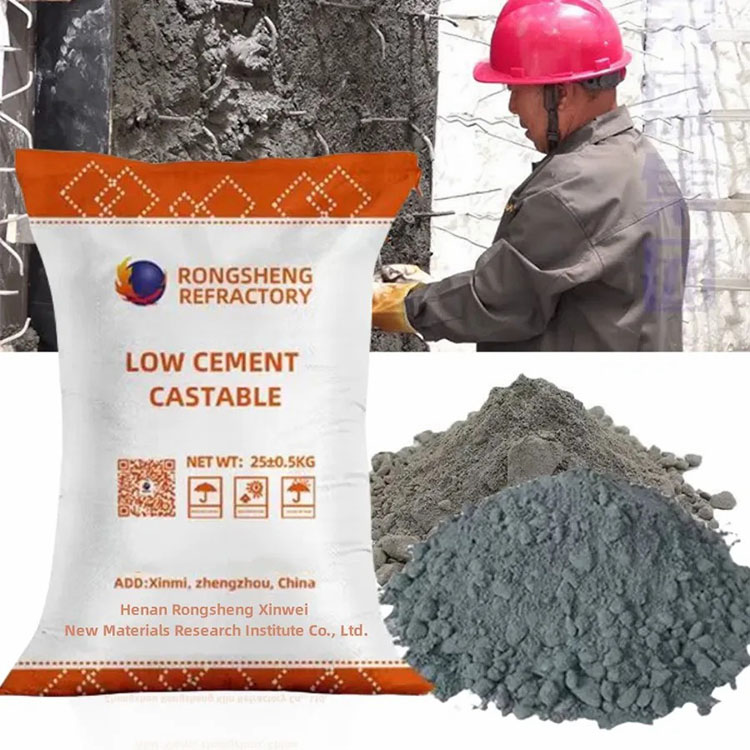Durable And Energy-Saving Ultra-Low Cement Refractory Castables
Ultra-low cement refractory castable is an important refractory material. Below is a detailed introduction:
1. Definition and Characteristics
Ultra-low cement refractory castable refers to a type of refractory castable in which the amount of calcium aluminate cement is significantly reduced, typically with a CaO content of less than 1%. By reducing the amount of cement and introducing additives such as ultra-fine powders, this material enhances refractoriness, high-temperature strength, slag resistance, and reduces porosity. Its main characteristics include:
- High Refractoriness and High-Temperature Strength: Due to the reduced amount of cement, the number of low-melting phases in ultra-low cement refractory castable is greatly reduced, thus improving refractoriness and high-temperature strength.
- Excellent Slag Resistance: Ultra-low cement refractory castable demonstrates strong resistance to corrosive substances, showing good wear resistance.
- Low Porosity and High Bulk Density: Reduced water usage during construction results in lower porosity and higher bulk density, further enhancing the material’s performance.
- Good Workability: It can be made into self-flowing or vibrating castables as needed to adapt to different structural construction requirements.
2. Composition and Preparation
Ultra-low cement refractory castable is mainly composed of refractory aggregates, refractory powders, an appropriate amount of ultra-fine powders, a small amount of calcium aluminate cement (as a slow-acting setting agent), and trace dispersants. During preparation, the proportions of these components must be strictly controlled, and the mixture must be thoroughly blended to ensure uniformity and stability. Additionally, in some cases, a small amount of water-reducing agent and slow-acting setting agent may be added to further improve the material’s performance.
3. Application Range
Ultra-low cement refractory castable is widely used in industrial kilns in industries such as metallurgy, petroquímica, machinery manufacturing, power generation, and building materials as lining material. Specific application areas include heating furnaces, various heat treatment furnaces, electric furnace covers, vertical kilns, rotary kilns, blast furnace iron troughs, steel ladles, and iron ladles, as well as high-temperature refractory components with metal anchorages.
4. Performance Advantages
- Long Service Life: Ultra-low cement refractory castable has high refractoriness and high-temperature strength, significantly extending the lifespan of kilns.
- Energy Saving and Consumption Reduction: Due to its excellent thermal insulation properties, it effectively reduces energy consumption and improves the thermal efficiency of industrial equipment.
- Easy Construction: It has good workability, can be easily cut and assembled, making the construction process fast and convenient.
- Significant Economic Benefits: Although the initial investment in ultra-low cement refractory castable may be higher, its long service life and energy-saving benefits result in significant economic returns in the long term.
5. Precautions
- Construction Preparation: Ultra-low cement refractory castable must be pre-mixed to ensure that all additives are evenly blended, avoiding performance instability.
- Baking Procedure: The baking process is a key factor in determining the performance of ultra-low cement refractory castable. It is essential to strictly follow the baking procedure to ensure the material achieves its high-temperature performance.
- Maintenance and Management: Regular inspection and maintenance of kilns are necessary during use to promptly detect and address potential issues, extending the service life of the kiln.
In conclusion, ultra-low cement refractory castable occupies a crucial position in the refractory materials field due to its excellent performance and broad application prospects.

